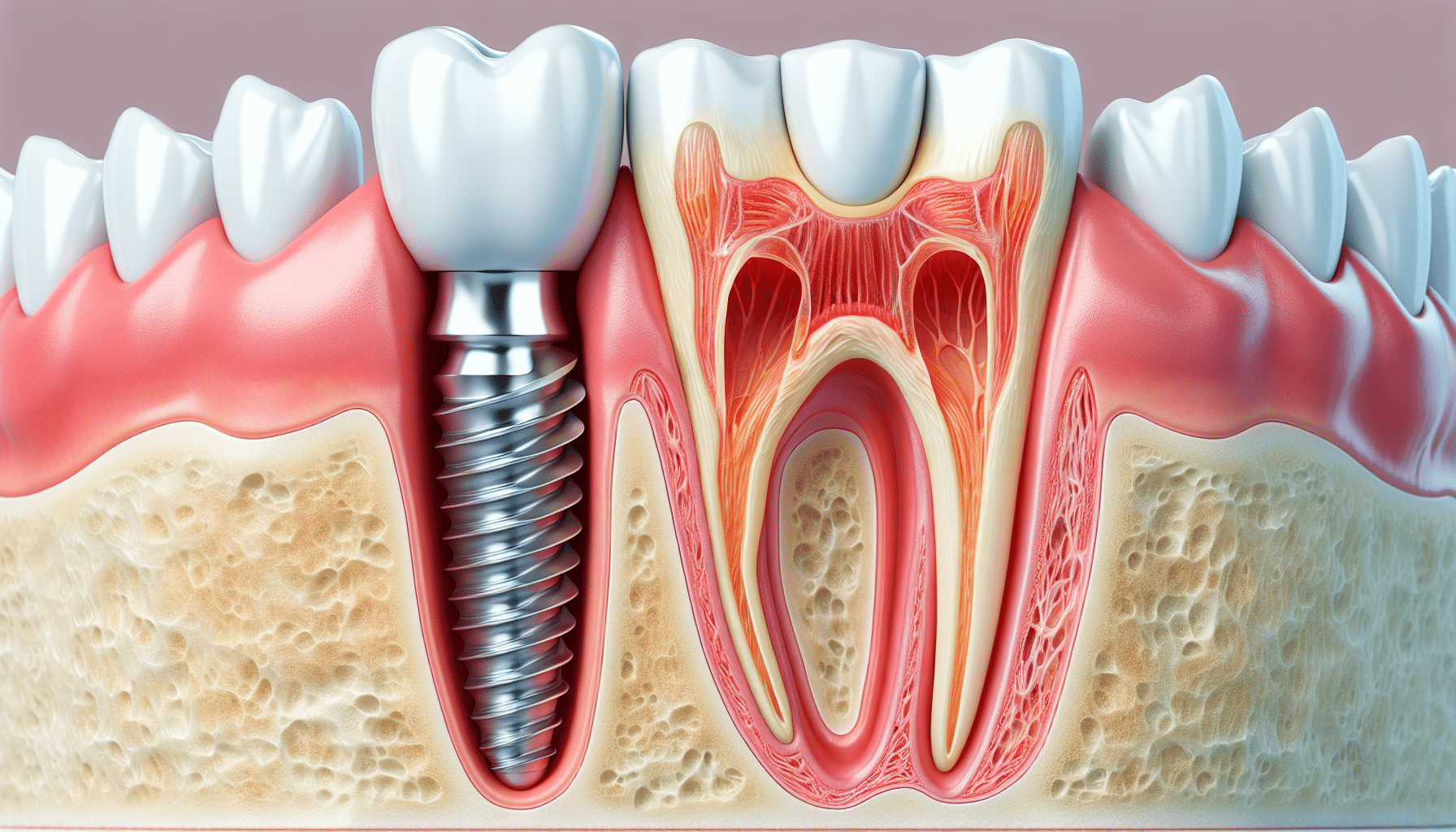Dental Sense Fundamentals Explained
Dental Sense Fundamentals Explained
Blog Article
6 Simple Techniques For Dental Sense
Table of ContentsUnknown Facts About Dental SenseGetting My Dental Sense To WorkNot known Facts About Dental SenseDental Sense Things To Know Before You Buy
are medical devices operatively dental implanted right into the jaw to restore an individual's capability to chew or their look. They provide support for fabricated (fake) teeth, such as crowns, bridges, or dentures. When a tooth is shed as a result of injury or illness, a person can experience problems such as quick bone loss, faulty speech, or adjustments to eating patterns that result in pain.Dental dental implant systems include a dental implant body and dental implant joint and might additionally consist of a joint fixation screw. Dental implant vs bridge. The oral implant body is surgically inserted in the jawbone in place of the tooth's origin. The oral implant joint is normally affixed to the implant body by the abutment fixation screw and prolongs via gums right into the mouth to sustain the affixed man-made teeth
(https://www.gaiaonline.com/profiles/dentalsense1/46992240/)Framework of The Oral Implant System choosing dental implants, talk with your dental copyright concerning the possible benefits and risks, and whether you are a prospect for the procedure. Things to think about: Your total wellness is a crucial aspect in establishing whether you are a great candidate for oral implants, for how long it will take to heal, and for how long the implant may remain in area.
Smoking may affect the healing procedure and lower the long-lasting success of the implant. The healing procedure for the implant body might take a number of months or longer, during which time you normally have a short-lived joint in area of the tooth. the oral implant treatment: Very carefully follow the oral hygiene instructions offered to you by your dental supplier.
6 Easy Facts About Dental Sense Described
Implant failure can cause the requirement for one more surgery to fix or change the dental implant system. Recovers the capability to eat Restores aesthetic appearance Assists keep the jawbone from reducing due to bone loss Maintains the health of the bordering bone and periodontals Assists maintain surrounding (neighboring) teeth secure Enhances high quality of life Damages to bordering all-natural teeth during dental implant placement Injury to the surrounding tissues throughout surgical treatment, such as sinus opening Injury throughout surgical treatment (for instance, fracture of surrounding jawbone) Insufficient feature, such as really feeling like the teeth do not bite with each other usually A feeling that the tooth hangs or twisting in position resulting from a joint screw loosening up Implant body failure (looseness of the dental implant body) because of systemic infection, which might be most likely in patients with uncontrolled diabetes mellitus due to regional infection in bone and gum tissues sustaining the dental implant body because of delayed healing, which might be more probable in patients that smoke Problem cleansing the gum tissues around the implant, resulting in bad oral health Untreated gum illness Post-surgical pins and needles because of nerve impingement or damages Always alert healthcare carriers and imaging technicians that you have dental implants before any kind of magnetic resonance imaging (MRI) or x-ray procedures.
FDA is not familiar with any type of adverse events reported for MRI or x-ray treatments with dental click to find out more implants. Dental implants systems are commonly made from materials that comply with international consensus criteria of the International Organization for Standardization (ISO) or ASTM International. These criteria have information of what makes a risk-free material.

An oral implant is a framework that replaces a missing tooth. With screw-like tools, the doctor inserts an implant into the jawbone, and it acts as a support for a fabricated tooth, called a crown. A gadget called an abutment connects the man-made tooth to the dental implant. The crown is tailor-made to fit the individual's mouth and match the shade of their teeth.
Not known Incorrect Statements About Dental Sense
Some individuals are not qualified for dental implant surgical treatment. It is for dental doctors to operate individuals with: severe illnessuncontrollable metabolic diseasebone or soft tissue disease or infectionIf these issues are solved, an individual can have the surgical procedure. In, dental specialists avoid operating individuals with: If people with any one of the above undertake oral implant surgical procedure, there is a greater danger of the implant failing.

Oral implant surgical procedure is a customized process. Give you time to recover. Affix the message and final crown, bridge or denture.
Next, your specialist will carefully put the oral implant right into your jaw. If your dental implant is near the front of your mouth, your dental practitioner will certainly make a momentary tooth for you to use up until you heal.
The 9-Minute Rule for Dental Sense
Throughout the recovery phase, your jawbone needs to fuse to the dental implant. This procedure can take anywhere from three to 9 months.
As soon as your dental implant heals, your dental professional can attach the joint (little adapter post) and your last restoration (crown, bridge or denture). This typically takes about one hour to complete and may need a 2nd small surgical treatment. You shouldn't really feel any discomfort during your oral implant treatment because your provider will use medicine to numb your periodontals.
Report this page